We are often asked if we can make test strips or color charts in smaller, closer increments, and we always want to say “YES!”, but we sometimes have limitations.
To understand color chart limitations, we need to take a closer look at the human eye. Today, we’re getting knee-deep in eyeballs and the color spectrum. Sounds lovely, doesn’t it?
How Does the Human Eye Work?
Let’s journey through the eye to find out how it really works.
According to the National Keratoconus Foundation, light rays pass through the cornea, which bends the light rays allowing them to pass freely through the pupil to the iris, then through the eye’s natural crystalline lens, through the vitreous, and finally enter the retina.
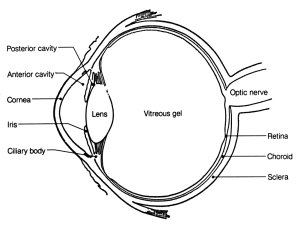
It feels like we just took a trip on the Magic School Bus, and we still have a long way to go!
The retina captures all of the light rays and processes them into light impulses through millions of nerve endings, which then send the light impulses to the optic nerve through more than a million nerve fibers.
Now, we’re getting to the good stuff.
The retina contains rods and cones, which transmit levels of light to the brain. Rods transmit mostly black and white information, and cones transmit higher levels of light intensity. Cones create the perception of color and visual sharpness.
We found a great visual from Starizona in Tucson, AZ to show the difference between rods and cones.
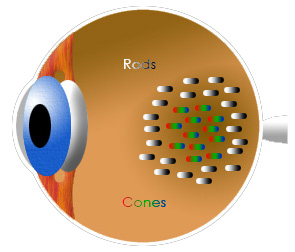
How Do We See Different Colors?
We use a Pantone Color Book to select color values for our color charts, so where else would we go than straight to Pantone to explain how we see color.
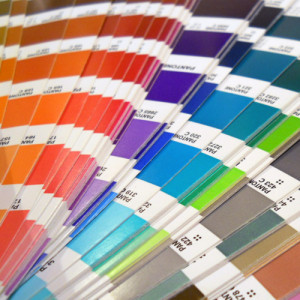
The folks at Pantone have explained that there are three types of cones found in the retina, sensitive to either long, medium, or short wavelengths of light. Cones transmit enough information to the brain to allow us to interpret and name colors.
Fascinating, isn’t it? We see colors instantly, but the process is actually quite extensive.
When we look at an object, the surface of that object reflects some colors and absorbs all others. We perceive only the reflected colors. In reality, the surface of that object is reflecting wavelengths, which are detected by cones.
Red, green, and blue are primary colors on the color spectrum, and when combined in various amounts, all of the colors in the visible color spectrum can be produced.
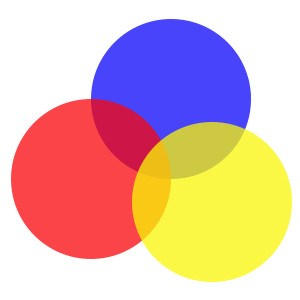
The Human Factor
So how do the inner workings of the human eye relate to our color charts limitations?
Well, most people can see color, and we now understand how, but such an intricate process, results in a broad variety of color perception.
Basically, when multiple people look at the same apple, not everyone will see the same shade of red.
Some people can distinguish cool blue-green colors better, while others can distinguish warm red colors better. In addition, lighting plays a big role in how colors are perceived. Scattered natural light, direct sunlight and artificial light all produce a different perception of color.
Here’s an example of a narrow-range blue-green color chart:

Starting to see what we’re getting at?
If the increments on a color chart are too close together, the colors will be very similar and thus, indistinguishable by the human eye.
Generally, the next increment on a color chart should be at least two times higher than the previous to enable the human eye’s natural perception to see a color difference.
So you see, it’s not necessarily a matter of limits in chemistry and test strip development, but rather, a limitation of the human eye.
Sure, we could have just said close-range increments are nearly impossible on a color chart, but we don’t like to use the “i” word. Think positive people. Someday in a futuristic world, we might have robotic glasses that can detect every color in the spectrum, and THEN, our color chart possibilities will be limitless.




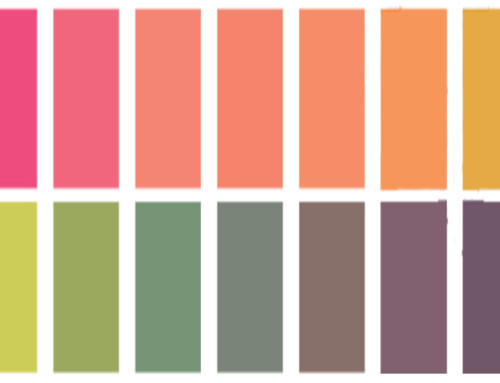


Leave A Comment